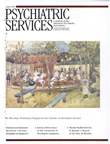The relationship between nurses' limit-setting styles and anger in psychiatric inpatients
Abstract
OBJECTIVE: Violence by patients in psychiatric settings is frequently associated with the quality of staff-patient interactions. Impulsivity has been identified as a high risk factor for anger and aggression. This study was designed to test the influence of nurses' limit-setting styles on anger among psychiatric inpatients grouped by high or low levels of impulsivity. METHODS: Ninety-seven patients with various diagnoses and either high or low levels of impulsivity participated in role-play scenarios in which nurse actors played out six limit-setting styles, ranging from belittlement to explanations of rules to empathy linked with a presentation of an alternative course of action. Patients' level of anger in response to the acted scenario was assessed using the Spielberger State-Trait Anger Scale. RESULTS: Patients' level of anger was highest in response to unempathic limit-setting styles, moderate for explanations, and lowest for empathic styles. Impulsive subjects were more likely to respond with anger than nonimpulsive patients, regardless of the limit-setting style. CONCLUSIONS: Although many current intervention programs focus on reducing patients' anger after it occurs, the study results suggest that it may be possible to prevent some of patients' anger by improving nurses' limit-setting styles.
Access content
To read the fulltext, please use one of the options below to sign in or purchase access.- Personal login
- Institutional Login
- Sign in via OpenAthens
- Register for access
-
Please login/register if you wish to pair your device and check access availability.
Not a subscriber?
PsychiatryOnline subscription options offer access to the DSM-5 library, books, journals, CME, and patient resources. This all-in-one virtual library provides psychiatrists and mental health professionals with key resources for diagnosis, treatment, research, and professional development.
Need more help? PsychiatryOnline Customer Service may be reached by emailing [email protected] or by calling 800-368-5777 (in the U.S.) or 703-907-7322 (outside the U.S.).



